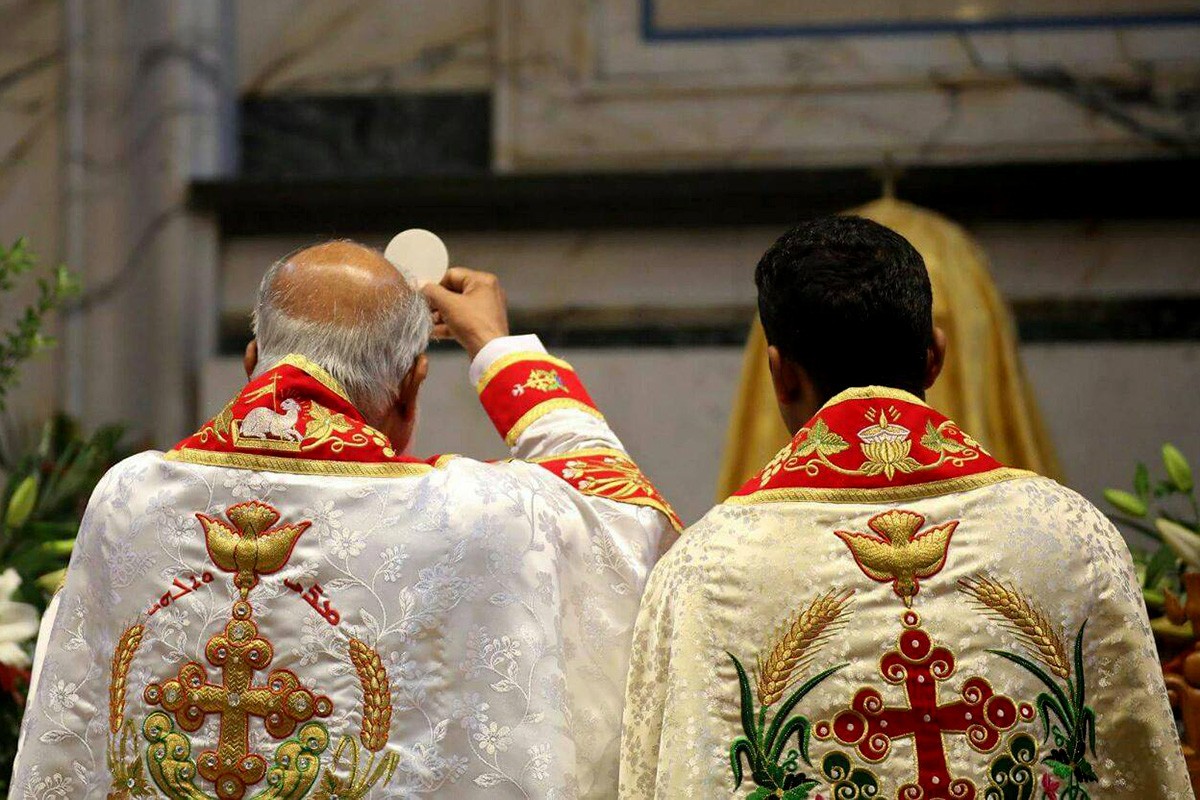Controversy and division have persisted within an Indian archdiocese over the orientation of the celebrating priest during liturgical events. To address this ongoing issue, Pope Francis has designated Slovak Archbishop Cyril Vasil of Košice as his pontifical delegate. The Vatican disclosed that Archbishop Vasil arrived in Kochi, the hub of the Syro-Malabar Archdiocese of Ernakulam-Angamaly, on August 4.
A recent report from UCA News, an Asian ecclesiastical news agency, dated August 8, has brought to light that a substantial coalition of priests and laypeople, who are opposed to adopting the standardized liturgical directives ratified by the Synod of Bishops of the Syro-Malabar Catholic Church in 1999, has contested the legitimacy of Archbishop Vasil’s appointment.
 Prior to the Synod’s resolution, there existed variance among priests in terms of their positioning relative to the altar during the celebration of the eucharistic liturgy, referred to as the Holy Qurbana in the Eastern-rite tradition. While some clergy faced the altar throughout the liturgy, others chose to face the congregation. The Synod ultimately ruled in favor of priests facing the altar during the eucharistic prayer, but directing their gaze toward the congregation during the Liturgy of the Word and again after the Communion.
Prior to the Synod’s resolution, there existed variance among priests in terms of their positioning relative to the altar during the celebration of the eucharistic liturgy, referred to as the Holy Qurbana in the Eastern-rite tradition. While some clergy faced the altar throughout the liturgy, others chose to face the congregation. The Synod ultimately ruled in favor of priests facing the altar during the eucharistic prayer, but directing their gaze toward the congregation during the Liturgy of the Word and again after the Communion.
In the majority of Syro-Malabar dioceses, priests promptly adhered to the Synod’s verdict. However, exceptions were made for the Archdiocese of Ernakulam-Angamaly and a select few other regions. These exemptions were rescinded by the bishops in November 2021.
The Archdiocesan Movement for Transparency, an assembly encompassing priests, religious individuals, and laity within Ernakulam-Angamaly, has expressed dissent regarding the manner in which the dispensation was revoked. The group has consistently advocated for the continuation of the established practice since 1970, wherein the priest engages with the congregation throughout the entire liturgy.
Upon the arrival of Archbishop Vasil, who previously served as the secretary of the Dicastery for Eastern Churches, the dissenting group sought evidence of his papal appointment. They sought clarification since neither Archbishop Vasil nor the apostolic nunciature had presented an official letter of designation.
The Vatican’s move to appoint Archbishop Vasil as a pontifical delegate showcases the importance it places on reconciling the deep-seated divisions within the Syro-Malabar Archdiocese of Ernakulam-Angamaly. The archbishop’s presence in Kochi, the heart of the conflict, is indicative of the Vatican’s intention to mediate and resolve this ongoing liturgical dispute.
Nonetheless, the controversy remains far from resolved. The UCA News report underscores the skepticism held by a significant group of priests and laypeople who challenge the legitimacy of Archbishop Vasil’s appointment. This skepticism is rooted in the differing perspectives on liturgical practices, with a strong adherence to the prior tradition of the priest facing the congregation throughout the liturgy.
The Synod’s ruling in 1999 aimed to standardize liturgical practices across the Syro-Malabar Catholic Church. The decision to have priests face the altar during specific moments and the congregation during others was seen as a compromise to bridge the gaps between varying practices that had emerged over time.
While many dioceses fell in line with the Synod’s guidelines, the Archdiocese of Ernakulam-Angamaly chose to retain its long-standing practice of the priest facing the congregation. The subsequent decision to retract the dispensation led to substantial discontent among certain clergy and laity, giving rise to the Archdiocesan Movement for Transparency.
This movement’s persistence in adhering to the practice established in 1970, wherein the priest remains oriented towards the congregation, reflects the deep-seated attachment to tradition and resistance to change. The liturgical orientation, for them, is not merely a matter of practice but a symbol of identity and continuity.
The doubts raised by the dissenting group regarding Archbishop Vasil’s appointment reveal a broader skepticism towards the Vatican’s involvement and its proposed solution. The absence of an official letter of designation has fueled suspicions and concerns about the transparency and authenticity of the process.
Riju Kanjookaran, the spokesperson of the Archdiocesan Movement for Transparency, told UCA News Aug.7, “Our delegates met Archbishop Vasil. He is not ready to listen to us, instead, he wants us to simply comply with the uniform Mass adopted by the synod. It leaves no scope for any further discussion or dialogue.”
The liturgical dispute within the Syro-Malabar Archdiocese of Ernakulam-Angamaly continues to stir controversy and division. The Vatican’s appointment of Archbishop Vasil as a pontifical delegate to mediate the situation demonstrates its commitment to resolving the issue. However, challenges persist, as a substantial group remains skeptical about the legitimacy of the appointment and steadfastly clings to the traditional liturgical practice. As Archbishop Vasil’s involvement unfolds, the archdiocese and the broader Catholic community keenly await the resolution of this intricate and deeply rooted liturgical conflict.
